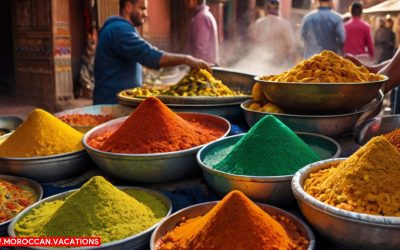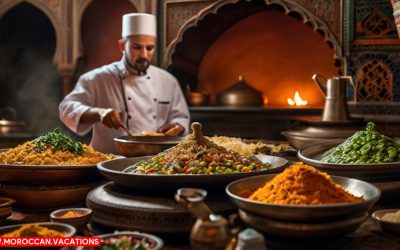The Vibrant Food Markets of Marrakesh
Get ready to embark on a culinary adventure like no other in Marrakesh, where you can immerse yourself in the vibrant food markets and learn the secrets of Moroccan cuisine. From the intoxicating aromas of spices to the art of perfecting tagine cooking, you’ll discover the true essence of Moroccan flavors. Indulge in sweet delicacies, unveil the mysteries of Moroccan tea, and experience the joy of hands-on cooking classes. Get ready to taste the fruits of your culinary freedom in Marrakesh.
Explore Marrakesh’s vibrant food markets and immerse yourself in the sights, sounds, and scents of a culinary haven. As you wander through the bustling streets, you’ll find yourself surrounded by an array of colorful stalls, each offering a tantalizing display of local delicacies. The food markets in Marrakesh are a feast for the senses, with the aroma of spices filling the air and the sounds of vendors calling out to passersby.
One of the best ways to experience the vibrant food markets is through a food tour. Led by knowledgeable guides, these tours will take you on a culinary journey, introducing you to the diverse flavors of Moroccan cuisine. You’ll have the opportunity to sample traditional dishes such as tagines, couscous, and pastries, all while learning about the history and culture behind these culinary delights.
But it’s not just the organized food tours that offer a taste of Marrakesh’s street food scene. As you explore the maze-like streets of the medina, you’ll come across numerous street vendors selling everything from freshly squeezed orange juice to fragrant kebabs. Don’t be afraid to indulge your taste buds and try something new – the locals are known for their warm hospitality and are always happy to share their favorite dishes with visitors.
Exploring the Aromas of Moroccan Spices
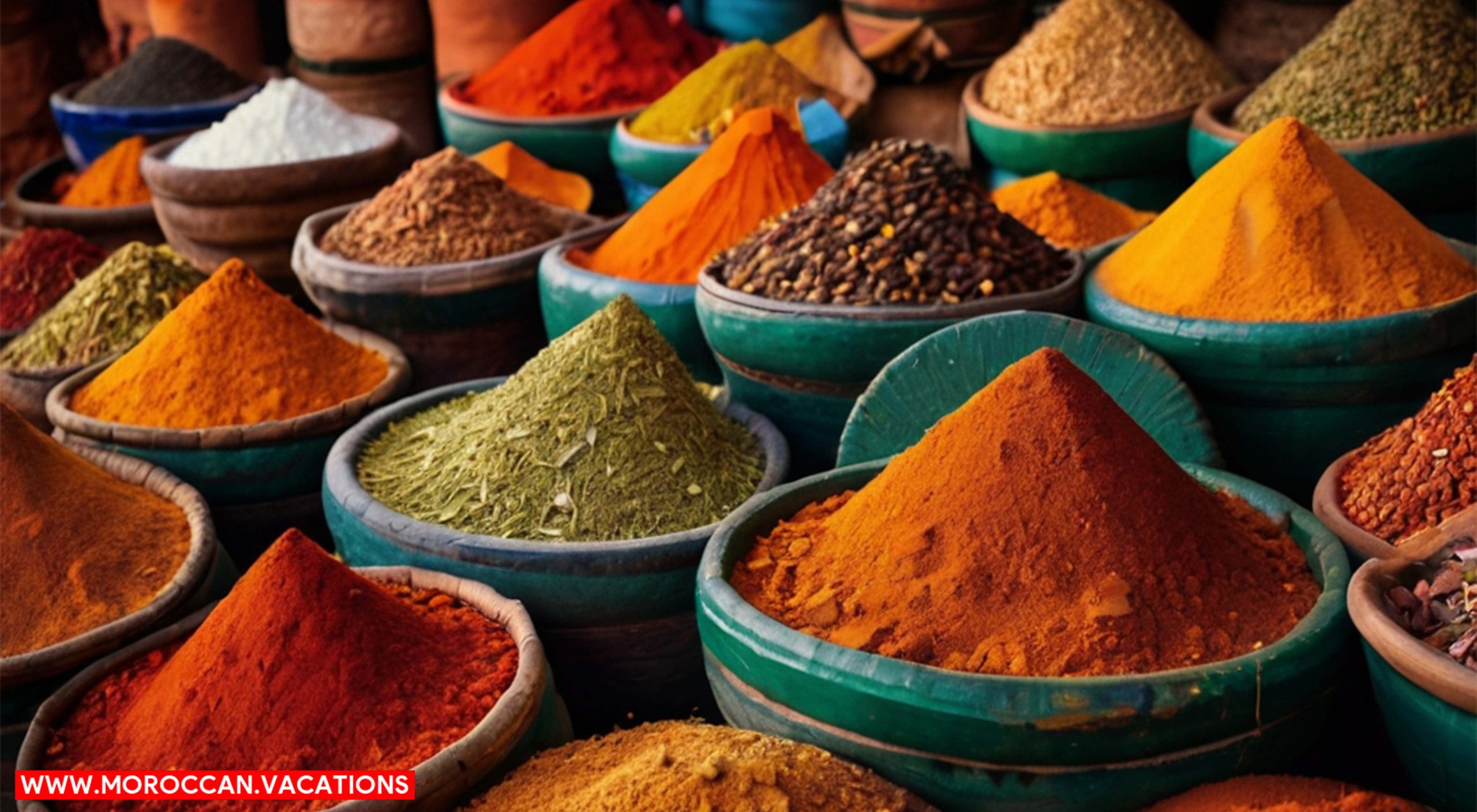

As you continue your culinary journey through Marrakesh’s vibrant food markets, immerse yourself in the captivating aromas of Moroccan spices. The air is filled with a symphony of scents, as you navigate the narrow alleyways lined with vendors selling an array of colorful spices. The history of spice trade in Morocco is rich and dates back centuries. The country’s strategic location on the trade routes between Europe, Africa, and the Middle East allowed for the exchange of spices and other valuable goods.
Moroccan spices not only add depth and flavor to the cuisine but also offer numerous health benefits. Cumin, for example, is known for its digestive properties and is often used in Moroccan dishes to aid in digestion. Turmeric, with its vibrant yellow hue, contains powerful antioxidants and anti-inflammatory properties. It is commonly used in tagines and other traditional Moroccan recipes.
As you take in the aromas of cinnamon, ginger, and cardamom, it’s hard not to be transported back in time to the bustling souks of Marrakesh. The spices, carefully sourced and blended, have played a significant role in Moroccan culture and cuisine. Each spice tells a story, reflecting the diverse influences that have shaped Moroccan cuisine over the centuries.
Traditional Moroccan Cooking Techniques
Discover the artistry of cooking in traditional Moroccan style through the use of age-old techniques and methods. Traditional Moroccan cooking techniques are an integral part of the country’s rich culinary heritage. Passed down through generations, these techniques bring forth the flavors and aromas that make Moroccan cuisine so unique. To truly immerse yourself in the world of Moroccan cooking, you must familiarize yourself with the traditional utensils and ingredients that are essential to this culinary tradition.
Moroccan cooking utensils play a crucial role in the preparation of authentic Moroccan dishes. One such utensil is the tagine, a cone-shaped clay pot used for slow-cooking flavorful stews. Its unique design allows for the retention of moisture and the infusion of flavors. Another important utensil is the couscous steamer, which is used to prepare the staple Moroccan dish of couscous. This steamer consists of a large pot at the bottom and a perforated top where the couscous is cooked over a simmering broth. The resulting fluffy couscous is a testament to the craftsmanship of Moroccan cooking.
When it comes to traditional Moroccan ingredients, the possibilities are endless. From aromatic spices like cumin, coriander, and saffron, to staple ingredients like chickpeas, lentils, and olives, Moroccan cuisine is a harmonious blend of flavors and textures. The use of preserved lemons and dried fruits like dates and apricots adds a unique sweet and tangy element to many dishes. The combination of these ingredients, along with the techniques used, creates a symphony of flavors that will transport you to the bustling streets of Marrakesh.
Now that you have a glimpse into the world of traditional Moroccan cooking techniques and ingredients, you can embark on a culinary adventure that will awaken your senses and set your taste buds free. Whether you’re a seasoned chef or a novice in the kitchen, exploring the artistry of Moroccan cuisine will surely leave you craving for more. So grab your tagine, gather your ingredients, and let the magic of Moroccan cooking transport you to a world of flavor and freedom.
Mastering the Art of Tagine Cooking
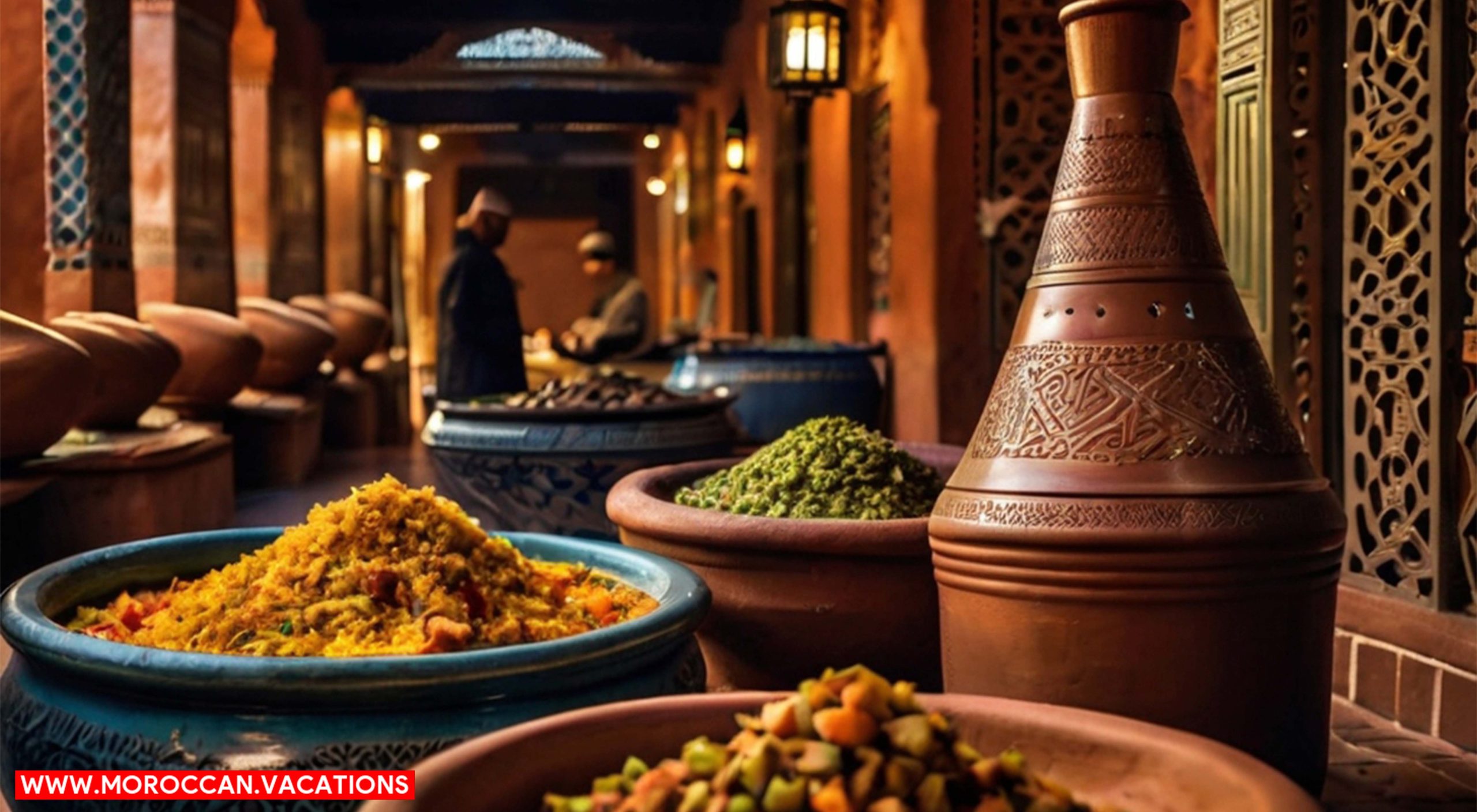

To master the art of tagine cooking, you will need to understand the essential techniques and flavors that make this traditional Moroccan dish so special. Tagine cooking is all about slow cooking and layering flavors to create a rich and aromatic dish. Here are some cooking tips to help you perfect your tagine:
First, choose the right ingredients. Authentic tagine recipes often call for a combination of meat, vegetables, and spices. Lamb, chicken, and beef are popular choices for the protein component, while vegetables like carrots, onions, and tomatoes add depth and texture. Traditional Moroccan spices like cumin, paprika, and cinnamon are essential for achieving the distinctive flavors of a tagine.
Next, make sure to properly season your tagine. This involves marinating the meat or vegetables with the spices and allowing them to infuse overnight. The longer the marination time, the more intense the flavors will be.
When it comes to cooking, remember that tagines are traditionally cooked over low heat, allowing the ingredients to simmer slowly and develop their flavors. This low and slow cooking method helps to tenderize the meat and allows the spices to meld together.
Finally, don’t be afraid to experiment and add your own twist to traditional tagine recipes. Feel free to incorporate your favorite ingredients or try different spice combinations to create a unique flavor profile.
Unveiling the Secrets of Moroccan Tea
Now, let’s delve into the secrets of Moroccan tea, building on the techniques and flavors we’ve already explored in tagine cooking. Moroccan tea culture is deeply ingrained in the country’s traditions, and it is a must-experience for any visitor. The art of preparing Moroccan tea involves a precise ritual that results in a delicious and fragrant beverage.
To truly appreciate Moroccan tea, it is important to understand the significance of each ingredient. The most common type of tea used is Chinese gunpowder green tea, known for its strong flavor and ability to withstand the addition of other ingredients. Fresh mint leaves are an essential component, adding a refreshing and aromatic twist to the tea. Finally, sugar is added to balance the strong flavors and create a harmonious blend.
In Moroccan tea culture, the preparation and serving of tea is an art form in itself. The tea is traditionally brewed in a special teapot called a “berrad,” which has a long spout for pouring. The tea is poured from a height to create a frothy layer on top. This process not only aerates the tea but also enhances its flavors.
Moroccan tea is not only a delightful drink but also offers several health benefits. Green tea is rich in antioxidants, which help to boost the immune system and fight against free radicals. Mint leaves are known for their digestive properties and can soothe an upset stomach. Additionally, the combination of green tea and mint can provide a gentle energy boost without the crash associated with caffeine.
So, the next time you visit Morocco, make sure to immerse yourself in the vibrant tea culture. Experience the joy of sipping on a steaming cup of Moroccan tea while indulging in the rich flavors and reaping the health benefits it has to offer. It’s a truly liberating experience for both the body and the soul.
| Ingredient | Significance |
|---|---|
| Chinese gunpowder tea | Adds strong flavor and withstands addition of other ingredients |
| Fresh mint leaves | Adds refreshing aroma and digestive properties |
| Sugar | Balances flavors and creates a harmonious blend |
Indulging in Sweet Moroccan Delicacies
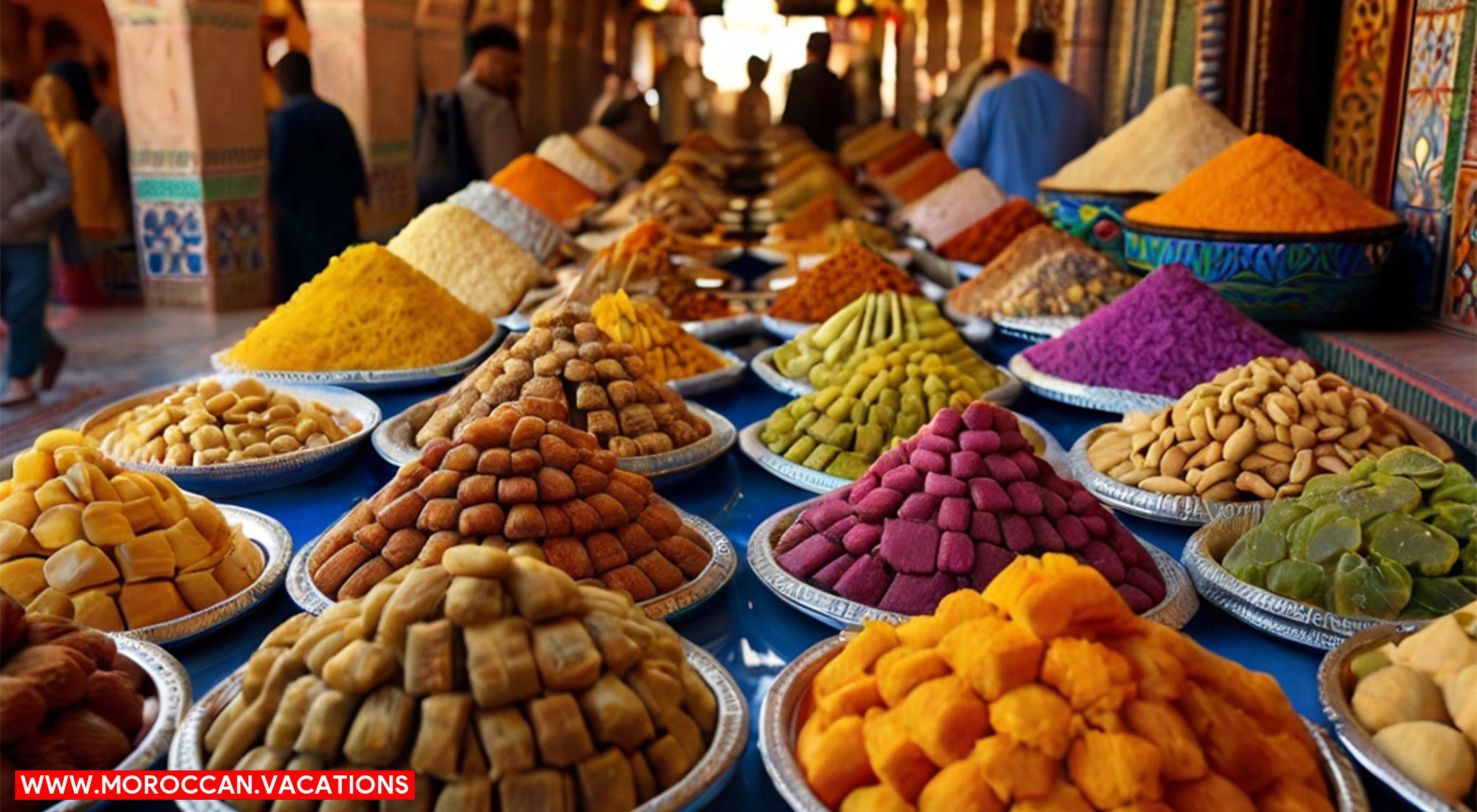

You can explore a delectable array of sweet Moroccan delicacies while immersing yourself in the culinary wonders of Marrakesh. The traditional Moroccan pastries will transport you to a world of rich flavors and textures. One must-try pastry is the Msemen, a flaky square-shaped pancake that is often stuffed with honey, butter, and almonds. The combination of the buttery pastry and the sweet, nutty filling is simply divine. Another popular treat is the Ghriba, a chewy and crumbly cookie made with ground almonds, sugar, and spices like cinnamon and cardamom. These cookies come in a variety of flavors, ranging from coconut to sesame. For a unique Moroccan dessert, try the Sfenj. These fluffy and deep-fried donuts are coated in sugar and are perfect when served with a cup of hot Moroccan tea. If you’re feeling adventurous, indulge in a slice of Pastilla, a sweet and savory pie made with layers of thin pastry, almonds, spices, and a dusting of powdered sugar. It may sound unusual, but the combination of flavors is surprisingly delightful. Discover the art of Moroccan pastry-making and savor the unique flavors of these sweet delights.
Hands-On Cooking Classes in Marrakesh
Immerse yourself in the culinary culture of Marrakesh by participating in hands-on cooking classes. These classes offer a unique opportunity to learn authentic Moroccan recipes and gain a deeper understanding of the traditional flavors and techniques used in Moroccan cuisine.
As you step into the vibrant kitchen, you are greeted by the aroma of exotic spices and the sight of traditional cooking utensils. The experienced instructors guide you through each step of the cooking process, sharing their knowledge and passion for Moroccan food. You get to work with ingredients like saffron, cinnamon, and cumin, carefully measuring and combining them to create the perfect blend of flavors.
Using traditional cooking utensils such as the tagine, a cone-shaped clay pot, you learn how to slowly cook tender meats and vegetables, allowing the flavors to meld together. The instructors also introduce you to other Moroccan cooking techniques, like the art of making couscous from scratch or baking crispy, flaky pastries.
Throughout the class, you have the freedom to experiment with different ingredients and adjust the seasoning to suit your taste. The hands-on experience allows you to truly understand the art of Moroccan cooking and gives you the confidence to recreate these authentic dishes in your own kitchen. So, roll up your sleeves, grab a wooden spoon, and prepare to unlock the secrets of Moroccan cuisine in these immersive cooking classes.
Tasting the Fruits of Your Culinary Adventure
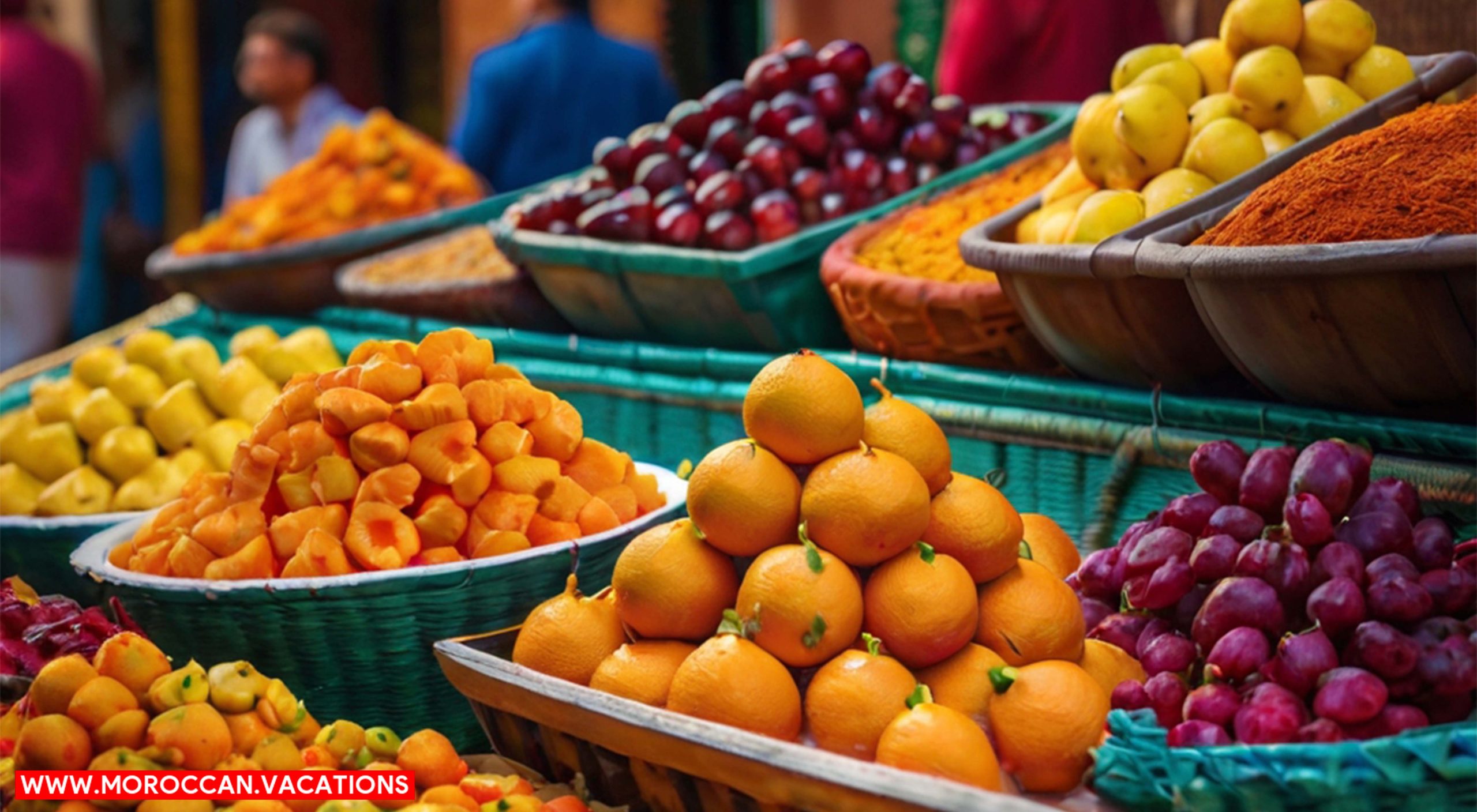

As you savor the fruits of your culinary adventure, the flavors and techniques you learned in the hands-on cooking classes in Marrakesh come to life on your taste buds. Every bite is a journey through the vibrant and aromatic Moroccan food culture. The combination of spices, herbs, and traditional cooking methods create a symphony of flavors that will leave you craving for more.
To help you remember and recreate the delicious dishes you learned, why not bring home some culinary souvenirs? Marrakesh is a treasure trove of spices, preserved lemons, and argan oil, all of which are essential ingredients in Moroccan cuisine. These ingredients can be found in the bustling souks, where you can immerse yourself in the sights and smells of exotic spices. The vendors are eager to share their knowledge and guide you in selecting the finest quality ingredients.
To give you a glimpse of the culinary souvenirs you can find in Marrakesh, here is a table showcasing some of the must-have ingredients:
| Culinary Souvenirs | Description | Usage |
|---|---|---|
| Spices | Aromatic blends of cumin, paprika, and saffron | Add depth and complexity to tagines and couscous dishes |
| Preserved Lemons | Lemons pickled in salt and lemon juice | Used to add a tangy and slightly sweet flavor |
| Argan Oil | Nutty oil extracted from argan tree seeds | Drizzle over salads or use as a finishing oil |
These culinary souvenirs will not only remind you of your incredible culinary adventure in Marrakesh but also allow you to recreate the flavors of Moroccan cuisine in the comfort of your own kitchen. So go ahead, unleash your creativity, and let the taste of Morocco transport you back to the vibrant and bustling streets of Marrakesh.


Samira Amrani
The passionate author behind Moroccan Vacations, sharing her expertise and love for Moroccan culture, cuisine, and travel experiences to inspire wanderlust in every reader.
Related Articles
Vegetarian and Vegan Options in Marrakesh Street Food
Traditional Moroccan Vegetarian Tagines Are you tired of feeling limited when it comes to finding vegetarian and vegan options in Marrakesh's bustling street food scene? Well, we've got some good news for you! Get ready to embark on a culinary adventure filled with...
Street Food Safety Tips for Enjoying Marrakesh's Local Cuisine
Research Local Food Regulations Did you know that Marrakesh is home to a vibrant street food scene, offering a rich variety of local cuisine? To fully enjoy these culinary delights while ensuring your health and safety, it's important to follow a few simple tips. In...
The Influence of Arab Cuisine on Moroccan Culinary Traditions
Historical Background of Arab Influence Imagine yourself transported to the vibrant streets of Morocco, where the tantalizing aroma of spices fills the air and the sizzle of food cooking on open flames entices your senses. In this culinary paradise, the influence of...

